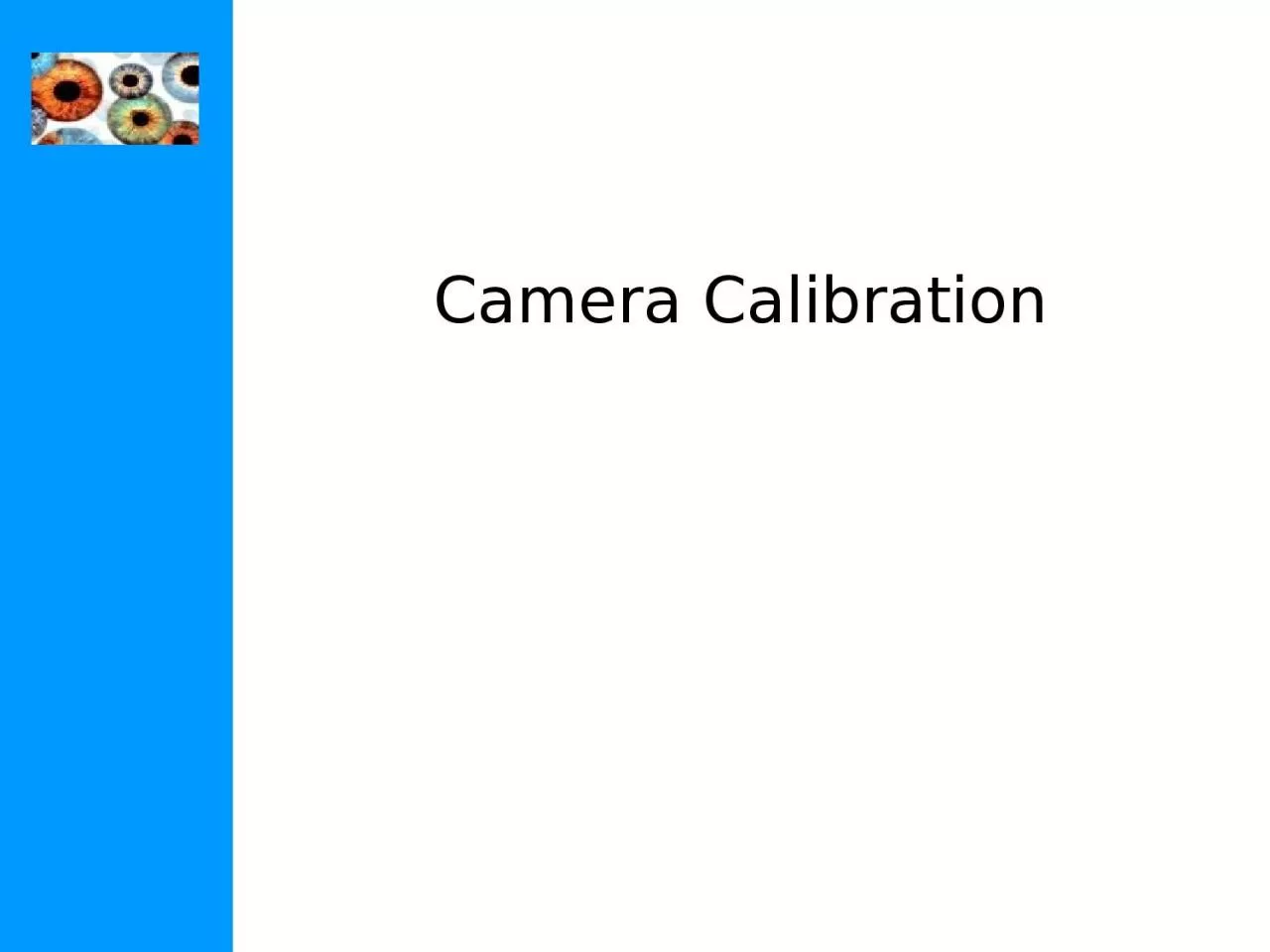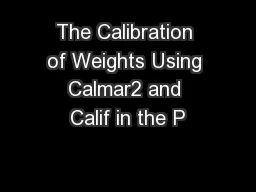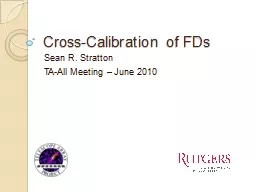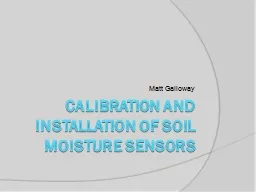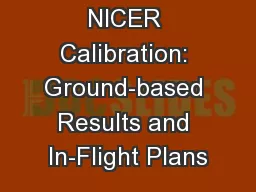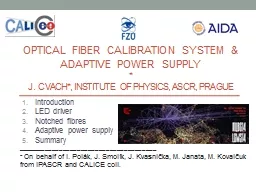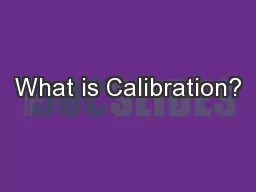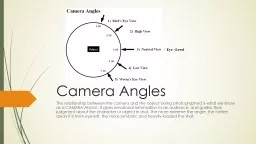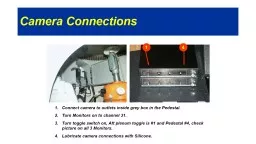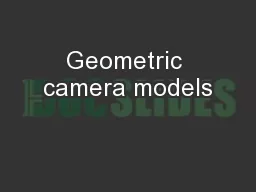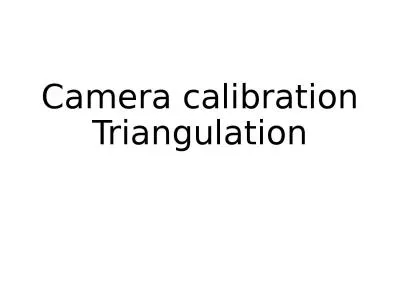PPT-Camera Calibration Camera calibration
Author : winnie | Published Date : 2023-11-12
Resectioning Basic equations Basic equations minimal solution Overdetermined solution 5½ correspondences needed say 6 P has 11 dof 2 independent eqpoints n 6
Presentation Embed Code
Download Presentation
Download Presentation The PPT/PDF document "Camera Calibration Camera calibration" is the property of its rightful owner. Permission is granted to download and print the materials on this website for personal, non-commercial use only, and to display it on your personal computer provided you do not modify the materials and that you retain all copyright notices contained in the materials. By downloading content from our website, you accept the terms of this agreement.
Camera Calibration Camera calibration: Transcript
Download Rules Of Document
"Camera Calibration Camera calibration"The content belongs to its owner. You may download and print it for personal use, without modification, and keep all copyright notices. By downloading, you agree to these terms.
Related Documents

